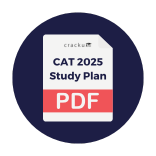A medical practitioner has created different potencies of a commonly used medicine by dissolving tables in water and using the resultant solution. Potency 1 solution: When 1 tablet is dissolved in 50
ml, the entire 50 ml is equivalent to one dose. Potency 2 solution: When 2 tablets are dissolved in
50 ml, the entire 50 ml of this solution is equivalent to 2 doses, ... and so on. This way he can give fractions of tablets based on the intensity of infection and the age of the patient. For particular patient, he administers 10 ml of potency 1, 15 ml of potency 2 and 30 ml of potency 4. The dosage administered to the patient is equivalent to
50 ml of potency 1 solution is equivalent to 1 tablet, 50 ml of potency 2 solution i equivalent to 2 tablets and so on.
Hence, 10 ml of potency 1 solution is equivalent to
= $$\frac{10}{50} = \frac{1}{5}$$
Similarly, 15 ml of potency 2 solution corresponds to = $$\frac{15}{50} \times 2 = \frac{3}{5}$$
and 30 ml of potency 4 solution corresponds to = $$\frac{30}{50} \times 4 = \frac{12}{5}$$
$$\therefore$$ Required dosage
= $$\frac{1}{5} + \frac{3}{5} + \frac{12}{5}$$
= $$\frac{16}{5} = 3.2$$ tablets
Video Solution

Create a FREE account and get:
- All Quant Formulas and shortcuts PDF
- 15 XAT previous papers with solutions PDF
- XAT Trial Classes for FREE




